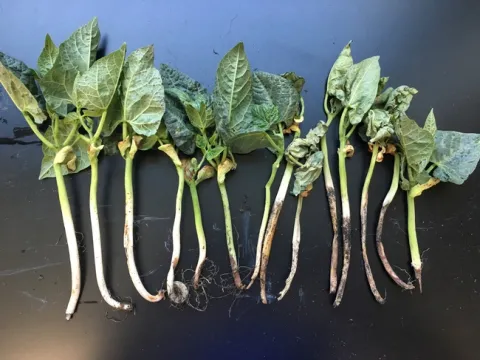
I sent plant samples to the UC Davis Plant Pathology Diagnostics lab for confirmation on disease. Rather than Rhizoctonia, the lab identified Fusarium oxysporum on all of the plant tissue submitted. While Fusarium oxysporum is the causal agent of Fusarium wilt (a.k.a. Fusarium yellows), the symptoms on these plants indicated root and crown rot, and NOT yellows. Fusarium root rot is common on other beans; however, it has not been a common problem in California limas. For this particular field, its cropping history has been various vegetables for the last couple years, including tomatoes with a severe Fusarium problem in 2016. Rotating out of beans or vegetables to grains would be a good management strategy for future years because Fusarium can live in the soil for several years. Fungicide seed treatments may also help. In this particular case, we talked about managing water well to try to avoid moisture stress (too much or too little) of the current crop to optimize the crop that is there. The grower and PCA assured me that they can manage the moisture well with the drip irrigation on this soil type. For future bean planting, waiting until soil temperature is warmer and not planting as deep would also be important strategies.

